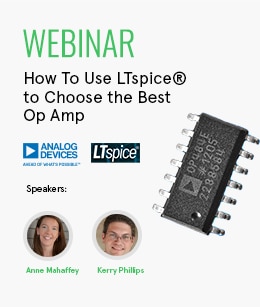Switch Mode Power Supplies (SMPS) need a printed circuit board (PCB). To see why check out this video. We look at how hard could it be to get a PCB design right! Hint: You need copper zones to get a low-noise SMPS design.
Supplemental Content:
Bill of Material:
| Product Name | Manufacturer | Quantity | Buy Kit |
|---|---|---|---|
| DC/DC CONV, BUCK/BOOST/INVERT, 85DEG C | On-Semi | 1 | Buy Now |
| Small Signal Schottky Diode, Single, 45 V, 8 A, 570 mV, 120 A, 150 °C | Vishay | 1 | Buy Now |
| Power Inductor (SMD), 180 uH, 1.9 A, Shielded, 1.6 A, SRR1210 Series, 12mm x 12mm x 10mm | Bourns | 1 | Buy Now |
| CAP, 4700uF, 16V, RADIAL, SMD | PANASONIC | 1 | Buy Now |
| SMD Multilayer Ceramic Capacitor, 0.47 µF, 25 V, 0805 [2012 Metric], ± 10%, X7R, -55 °C | SAMSUNG ELECTRO-MECHANICS | 1 | Buy Now |
| Surface Mount Thick Film Resistor, CRG Series, 68 kohm, 330 mW, - 5%, 150 V RoHS Compliant: Yes | TE CONNECTIVITY | 1 | Buy Now |
| SMD Aluminum Electrolytic Capacitor, Radial Can - SMD, 330 µF, 25 V, 0.8 ohm, 2000 hours @ 85°C | NIC COMPONENTS | 1 | Buy Now |
Additional Parts:
| PCBs: Auto-Routed, 6mil no pour, 6mil with ground pour, and Copper Zones |



Top Comments